Which Parent Carries The Autism Gene?
Unraveling the Genetic Origins of Autism: Paternal or Maternal?
Understanding the Role of Parental Genetics in Autism
The question of which parent passes on the autism gene has long intrigued scientists, clinicians, and families affected by autism spectrum disorder (ASD). While environmental factors undoubtedly contribute, current research emphasizes the significant role of genetics, revealing complex inheritance patterns that involve multiple genes and spontaneous mutations. Recent findings suggest a notable paternal influence in autism transmission, challenging previous assumptions and opening new avenues for understanding the genetic underpinnings of ASD.
The Genetic Foundations of Autism Spectrum Disorder (ASD)
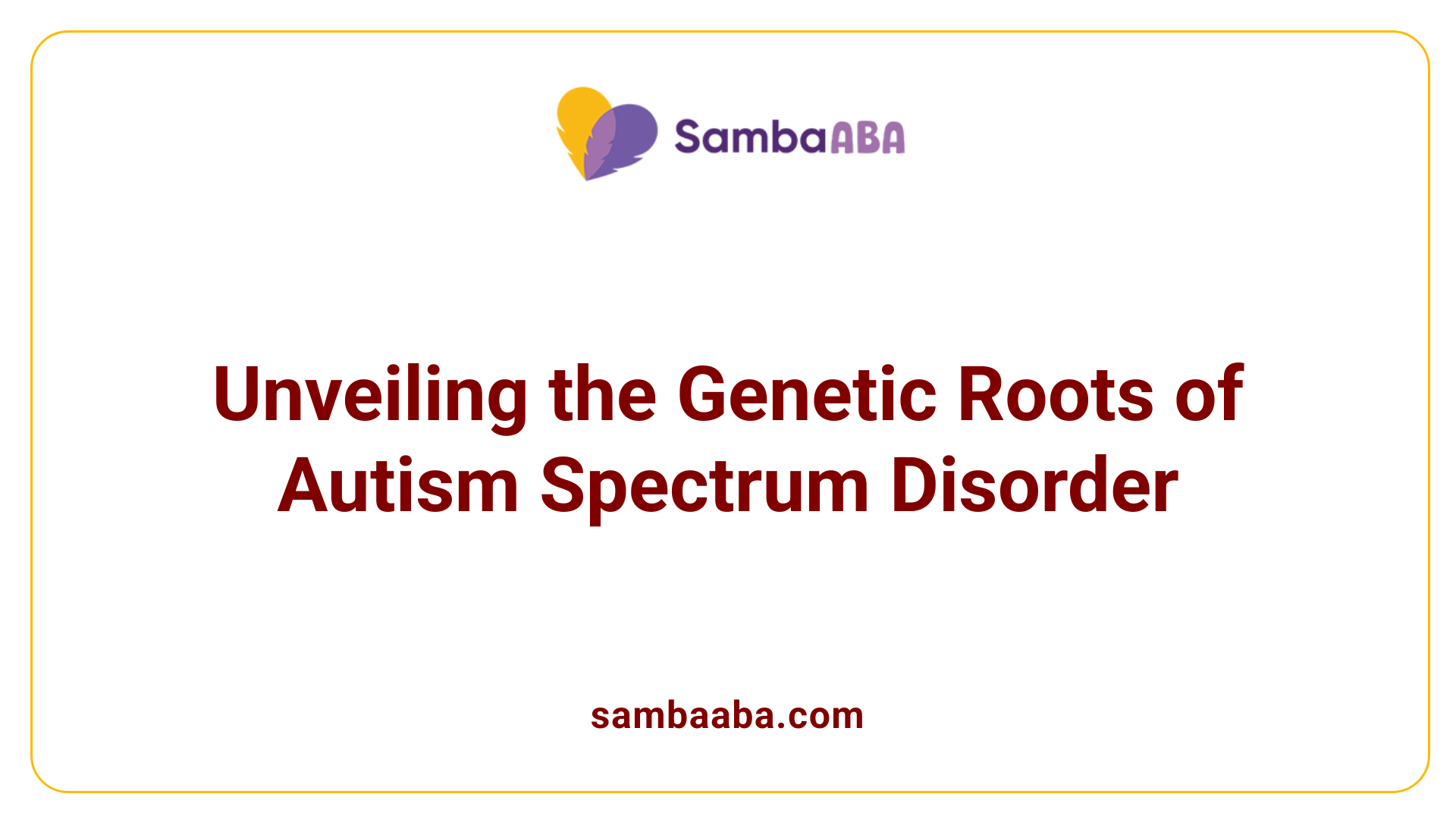
What role do genetic factors play in the development of autism?
Genetic factors are deeply involved in the emergence of autism spectrum disorder (ASD). Research indicates that approximately 80% of autism cases are linked to inherited genetic mutations, emphasizing a strong hereditary component. Studies show that autism often runs in families, with estimates suggesting that 60 to 90% of the risk stems from an individual's genetic makeup.
Genetics contribute to autism through a complex interplay of inherited genes and spontaneous mutations. Many of these genes influence early brain development, affecting how neurons communicate and how brain regions form during fetal growth. Both rare mutations and more common genetic variants are involved. For instance, mutations in certain 'risk genes' can have a profound impact, particularly when they affect genes that require two functioning copies for normal operation.
Research highlights that the paternal genome might have a more significant influence than previously thought. Siblings of children with autism tend to share closer genetic ties from their father, which suggests that paternal mutations could be particularly influential in some cases. Furthermore, de novo mutations—changes that occur spontaneously in the child's genome—are also important, especially in children with autism but no family history.
Genetic variations can include rare, severe mutations or common variants that individually have small effects but collectively influence susceptibility. Polymorphisms, copy number variations, and epigenetic changes all play parts in shaping autism risk.
Genetic testing is a useful tool for identifying markers associated with ASD, aiding early diagnosis and better intervention plans. Moreover, specific genetic disorders like Rett syndrome or fragile X syndrome are linked to higher autism risk, illustrating the genetic diversity underlying the condition.
Overall, both inherited and spontaneous genetic factors form the foundation of autism’s genetic landscape. While genetics provide a substantial explanation for ASD, environmental influences also interact with these genetic predispositions to shape individual outcomes.
How many genes are involved in ASD?
Autism is associated with a large number of genes—estimates suggest about 200 to 1,000 genes may influence susceptibility. This wide genetic involvement underscores the complexity of ASD, where multiple small-effect variants interact with environmental factors.
Many of these genes are critical for neurodevelopmental processes, such as synapse formation, neuronal migration, and brain circuitry establishment. Mutations or variations in these genes can disrupt normal brain wiring and communication, contributing to the characteristic features of autism.
How does genetic variation influence neurodevelopment?
Genetic variations impact neurodevelopment by altering the expression or function of key genes involved in brain growth and neural connectivity. These changes can lead to atypical brain structures or neuronal communication pathways, which are believed to underlie the social, communication, and behavioral traits associated with ASD.
Mutations that severely impair gene function tend to have more drastic effects, especially if they occur in genes essential for brain development. Such mutations might be de novo, not inherited, signifying spontaneous changes during gamete formation or early embryonic development.
In summary, genetic factors form a foundational component of ASD, influencing brain development, and interacting with environmental exposures. This genetic architecture explains the high heritability and familial clustering observed in autism epidemiology.
| Aspect | Description | Additional Details |
|---|---|---|
| Number of involved genes | 200-1,000 | Multiple small-effect variants contribute |
| Major contributors | Rare and de novo mutations | Focus on genes affecting neurodevelopment |
| Paternal influence | Notably significant | Siblings share more paternal genes |
| Environmental interactions | Yes | Influences gene expression and severity |
This complex genetic landscape illustrates why autism spectrum disorder remains a subject of extensive ongoing research, aiming to develop personalized intervention strategies.
The Complexity of Autism’s Genetic Architecture
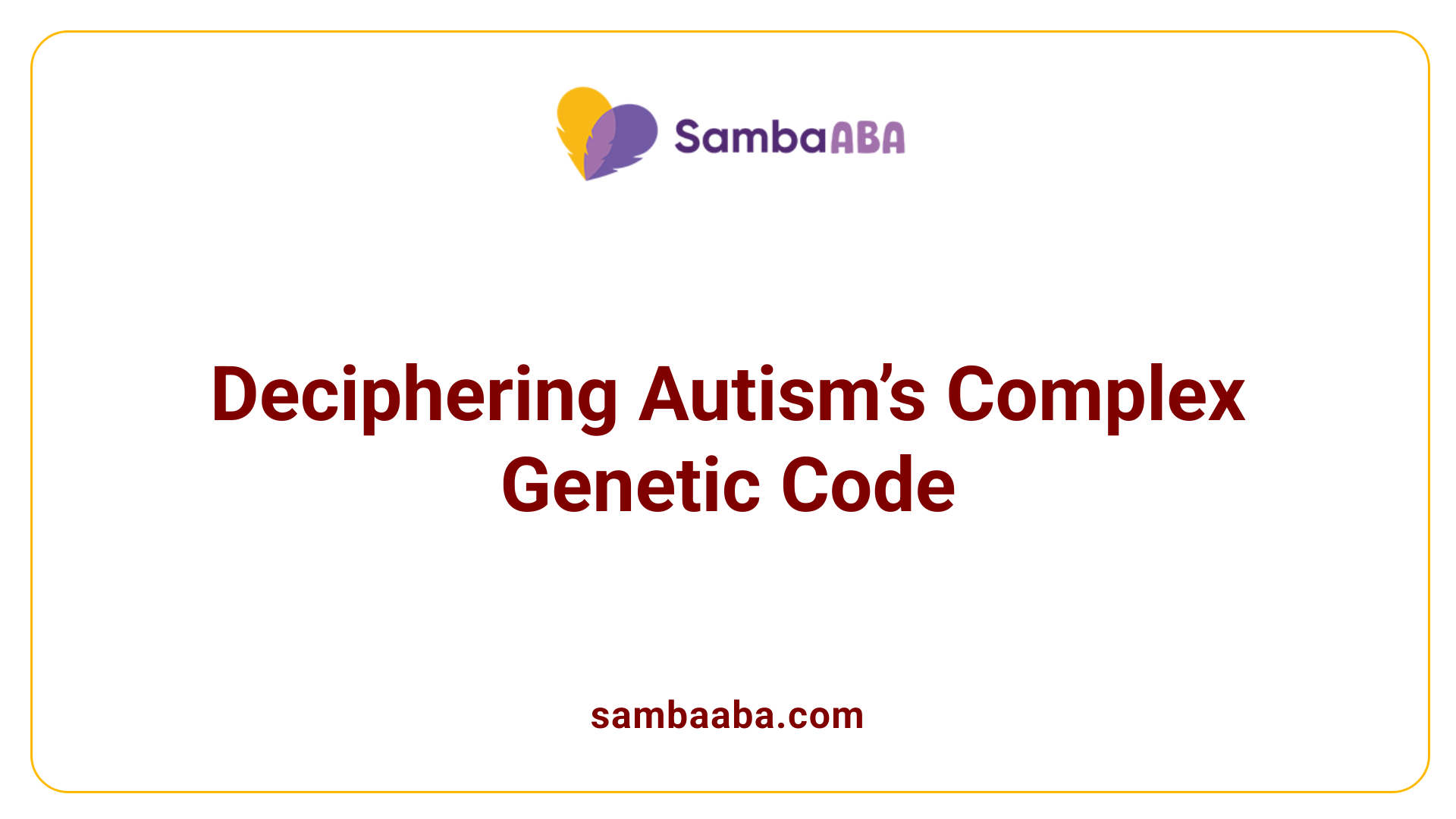
What is the genetic basis of autism?
The genetic foundation of autism is notably intricate, involving a large array of genes that influence susceptibility. Current research estimates that between 200 and more than 800 genes may contribute to autism risk, highlighting the disorder's polygenic nature. Heritability studies reveal that approximately 70-90% of autism cases can be attributed to genetic factors, though the genetic landscape encompasses both inherited mutations and spontaneous, de novo mutations that occur anew in the affected child.
Genetic variations such as copy number variations—specific duplications or deletions of chromosome segments—also play a significant role. Genes like SHANK3, MECP2, and CNTNAP2 have been associated with autism, often impacting neural development pathways and how brain regions communicate. These gene mutations can interfere with normal neurodevelopment during fetal growth.
While genetics are major drivers, environmental influences during early pregnancy, including exposure to toxins or infections, may modify risk, although they are less frequent causes relative to genetic factors. The overall picture of autism’s genetic architecture depicts an intricate interplay between multiple genetic variants and environmental conditions, converging to influence early brain development.
How many genes are associated with autism?
Research indicates that a vast number of genes are involved in autism, with estimates varying from around 200 to over 1,000. This wide range reflects the disorder’s complex genetic foundation, where many genes exert small to moderate effects.
Key genes identified—such as SHANK3, MECP2, and CNTNAP2—are involved in crucial neural processes like synapse formation and neural communication. Mutations in these genes can disrupt the typical development of brain networks, leading to autism spectrum traits. The abundance of potential genetic contributors underscores why autism presents with highly variable features and severity.
How heritable is autism?
Heritability estimates for autism consistently show that genetic factors play a dominant role, with figures ranging from about 70% to 90%. This high heritability is supported by twin and family studies indicating autism often runs in families.
Research into familial patterns reveals that siblings of autistic children tend to share more genetic material from their fathers, suggesting paternal genes may have a notable influence. Additionally, many genetic variants linked to autism are inherited, though spontaneous mutations—those arising anew—also contribute significantly, especially to cases with no prior family history.
What is the difference between inherited and spontaneous mutations?
Inherited mutations are genetic changes passed from parents to their children. They form the basis of genetic susceptibility to autism, especially when involving common variants that subtly alter neurodevelopment pathways.
Spontaneous mutations, also called de novo mutations, occur spontaneously in the child's genome and are not present in the parents’ DNA. These mutations can have severe effects if they disrupt critical genes involved in brain development. Interestingly, spontaneous mutations are thought to cause up to half of all autism cases where only one child in a family is affected.
Both types of mutations highlight the complex genetic origins of autism, where inherited alterations create a predisposed backdrop, and spontaneous mutations can independently trigger the disorder.
| Aspect | Details | Additional Insights |
|---|---|---|
| Number of genes linked | 200 to 1,000+ genes involved | Many genes with small effects collectively influence autism risk |
| Heritability estimate | 70-90% | High heritability supports strong genetic inheritance |
| Inherited mutations | Passed from parents, affecting susceptibility | Often combine with environmental factors |
| Spontaneous mutations | New mutations in child's genome, not inherited | Can cause autism even without family history |
The complex genetic architecture of autism underscores the importance of comprehensive genetic analysis and highlights how both inherited and spontaneous genetic variations, together with environmental factors, shape the neurodevelopmental trajectory leading to autism.
Understanding Heritability and Parental Contributions
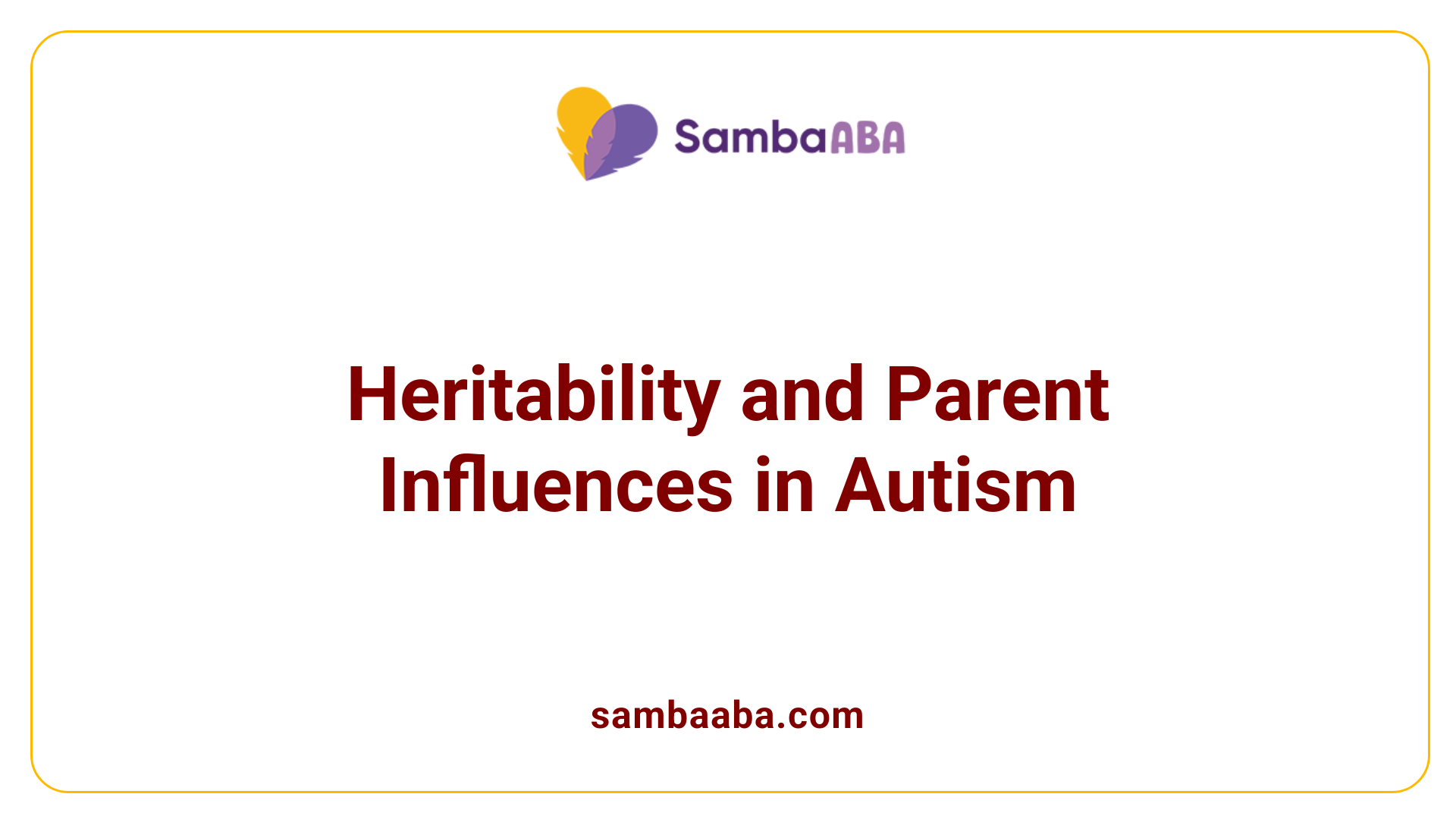
Are autism and other neurodevelopmental conditions hereditary?
Autism Spectrum Disorder (ASD) is largely considered to have a strong hereditary component. Studies indicate that from 40% to over 90% of autism risk is attributable to genetic factors. This high heritability estimate comes from twin and family research, which shows that autism tends to run in families.
Research has identified hundreds of genes linked to autism, many involved in brain development, neuron communication, and synaptic function. These include rare genetic variants with significant effects, as well as common variants that contribute to overall susceptibility. While environmental influences and epigenetic modifications may influence the development of autism, the dominant factor remains genetics.
Genetic testing can help identify some risk markers, although no single gene causes autism. Overall, the current understanding emphasizes that autism and related neurodevelopmental conditions are highly heritable, making genetic research vital for earlier diagnosis and personalized treatment.
Is autism inherited more from the mother or the father?
Emerging research suggests that paternal genetics may have a larger impact on autism inheritance than maternal genetics. Family studies examining siblings with autism show they tend to share about 66% of their genetic material from their father, compared to roughly 30% from their mother.
Furthermore, scientists are exploring how epigenetic factors—such as DNA methylation patterns—in fathers' sperm might influence autism risk in their children. These modifications can affect gene expression without changing the DNA sequence itself and have been linked to autistic traits.
While both parents contribute equally through inherited genes, current evidence points to a possibly stronger role for paternal genetic and epigenetic factors in autism risk. The interplay between maternal and paternal genetics, combined with environmental influences, creates a complex inheritance pattern for autism.
| Aspect | Key Findings | Additional Details |
|---|---|---|
| Heritability estimates | 40%-90% of autism risk from genetic factors | Based on twin/family studies |
| Family studies | Autism runs in families, with higher genetic sharing from fathers | Siblings share ~66% paternal, 30% maternal genetics |
| Parental contributions | Paternal influence may be more significant in some cases | Epigenetic factors in sperm linked to autism |
| Genetic mechanism | Multiple genes involved, some spontaneous mutations | No single gene causes autism |
Spontaneous Mutations and Non-inherited Causes of Autism
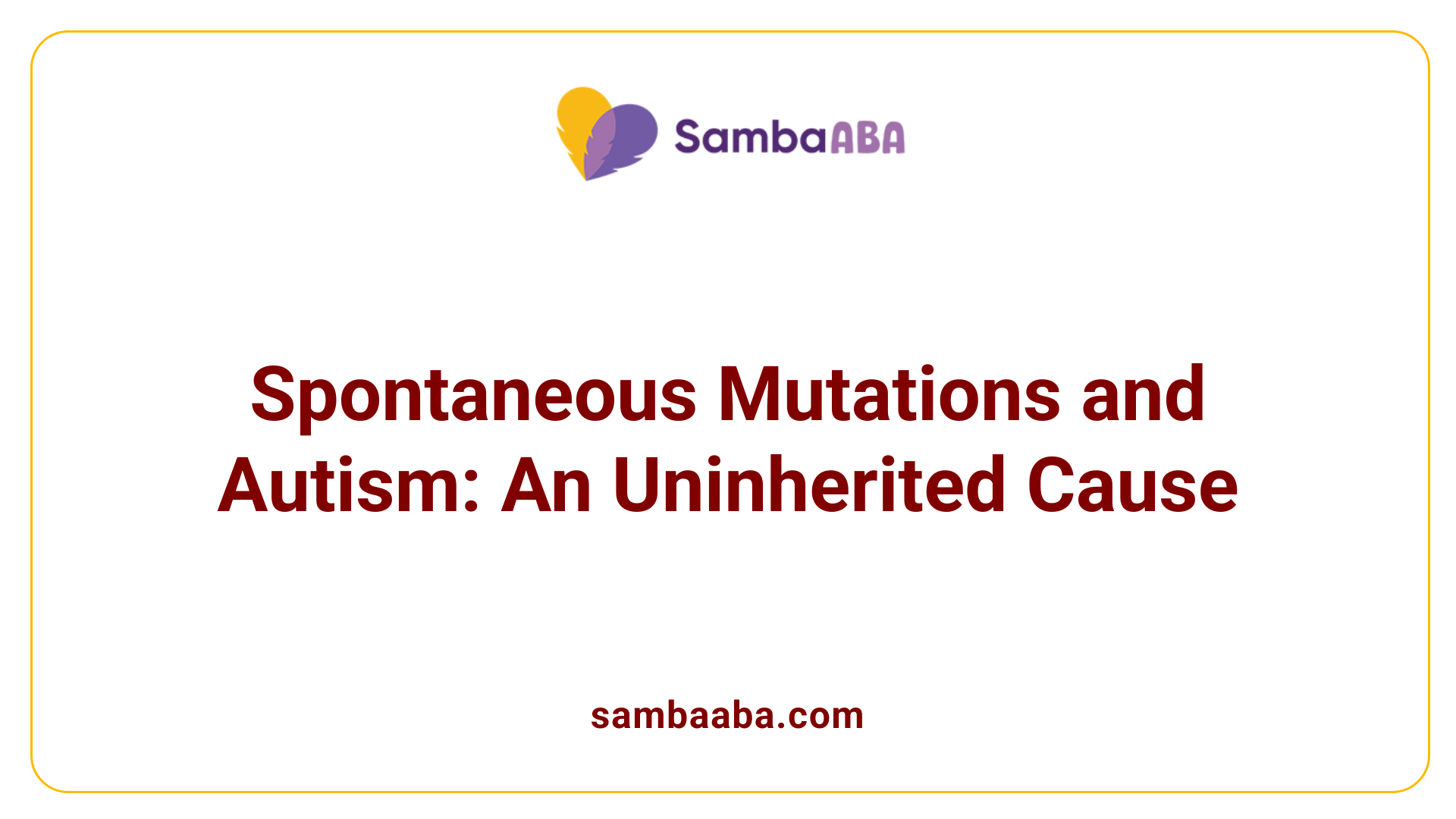
What are de novo mutations?
De novo mutations are spontaneous genetic changes that occur in the affected child's genome without being inherited from either parent. These mutations are new alterations in the DNA that can happen during the formation of reproductive cells or very early in embryonic development. Unlike inherited mutations, de novo mutations can appear suddenly and are not present in the parents’ genetic makeup.
How do spontaneous mutations in affected children contribute to autism?
Research shows that spontaneous mutations are responsible for a significant portion of autism cases, especially when only one child in a family is affected. These mutations can impact critical genes involved in brain development and function. Some 'risk genes' require two working copies for normal functioning, and a spontaneous mutation affecting one copy can lead to disruptions linked to autism. Children with autism often carry unique mutations that are not found in their parents.
What is the impact on autism risk?
Spontaneous mutations can increase autism risk independently of family history. While every individual has some spontaneous mutations, those affecting specific neurodevelopmental genes can be particularly damaging. These mutations tend to have a more profound effect when they occur in genes vital for brain cell communication and neural network formation.
The role of de novo mutations reveals that autism can develop even in children born to parents who are genetically typical and show no autism traits. This unpredictability makes understanding and diagnosing autism complex, as both inherited and non-inherited genetic factors contribute to its origins.
| Concept | Explanation | Additional Details |
|---|---|---|
| De novo mutations | New, spontaneous genetic changes | Arise during germ cell formation or early development |
| Impact on autism | Significant in cases with no family history | Can affect genes involved in neurodevelopment |
| Risk factors | Both inherited and new mutations | Environmental influences can also interact with genetic mutations |
Can two neurotypical parents have a child with autism?
Yes, two neurotypical parents can have a child with autism due to de novo mutations. These spontaneous mutations are not inherited but can still impact critical genes involved in brain development. As a result, even families with no prior history of autism or related disorders may have an affected child. The complex interplay between multiple genes and environmental factors like prenatal exposures plays a role in such cases.
What are the chances of having an autistic child if one parent has autism?
If one parent has autism, the likelihood of having an autistic child is higher than in the general population. Estimates suggest the risk is about 3 to 5%, compared to roughly 1.5% among all children. This increased risk stems from a combination of inherited genetic variants and possibly some environmental influences. However, the overall risk remains influenced by a mix of genetic and environmental factors, emphasizing that autism's genetic landscape is complex.
Genetic Markers and Their Role in Autism
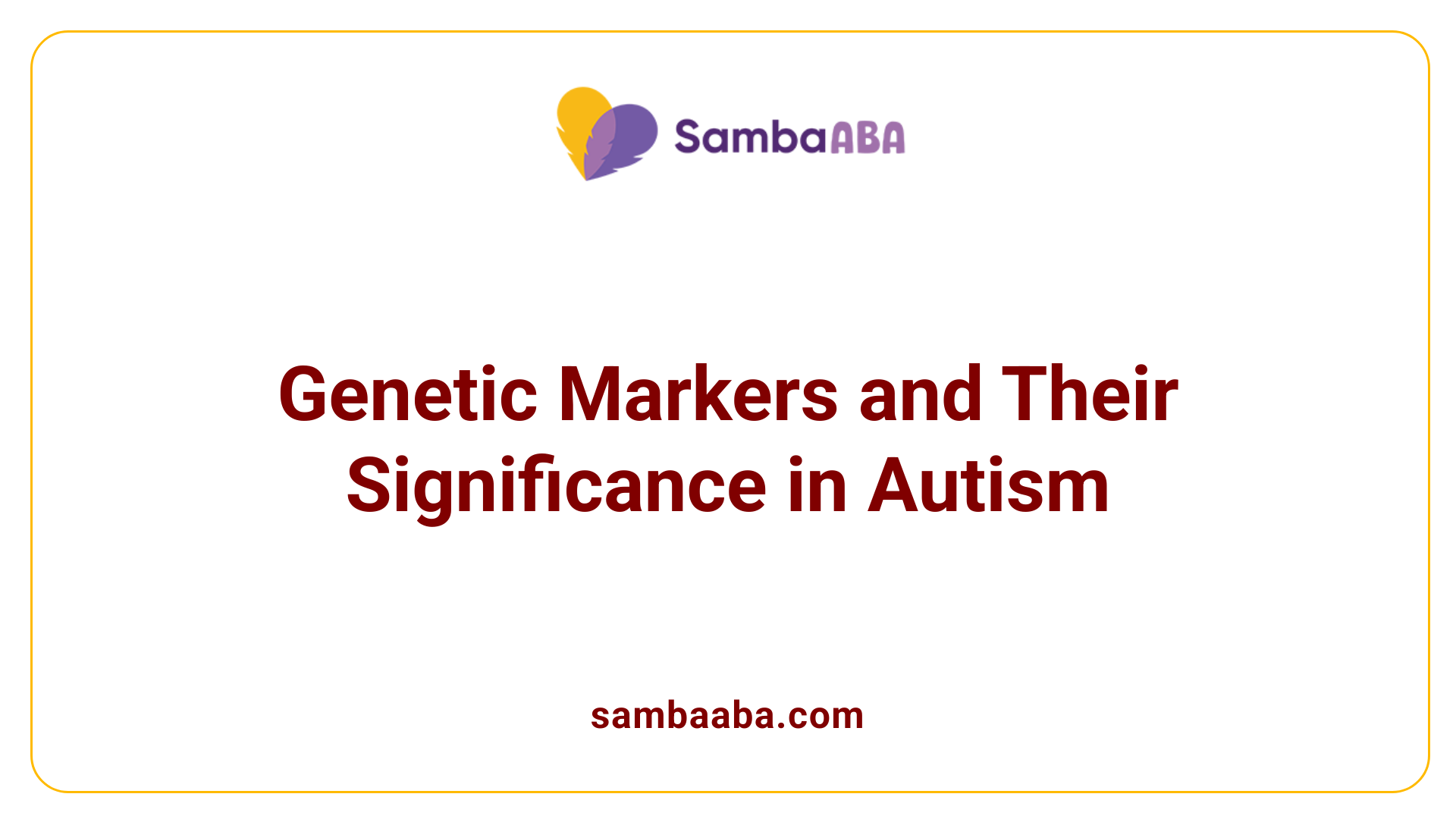
Are there genetic markers associated with autism?
Yes, numerous genetic markers have been linked to autism spectrum disorder (ASD). Current research has identified over 800 genes involved in autism risk. These include both inherited mutations and spontaneous variations, known as de novo mutations, which occur spontaneously in the child's genome.
Some of the most studied risk genes include SHANK2, SHANK3, CHD8, and NRXN1. These genes are often involved in critical neurodevelopmental processes such as synaptic functioning, cell signaling, and brain connectivity. Chromosomal abnormalities like deletions or duplications at 16p11.2 and 15q13.3 are also frequently associated with increased autism risk.
Genetic factors influencing pathways related to neuronal development, chromatin remodeling (which affects gene expression), and mitochondrial function are key in understanding the genetic basis of ASD. This complex genetic landscape highlights that no single gene causes autism; instead, it involves multiple genetic variants with small effects that collectively influence neurodevelopment.
Common and rare variants
Genetic variations contributing to autism are categorized mainly into common variants and rare variants. Common variants are inherited and occur frequently across populations but generally have a small individual effect on ASD risk.
Rare variants, including de novo mutations, are less frequent but tend to have a more significant impact when present. These can include point mutations, insertions, deletions, or structural changes in chromosomes.
Research indicates that children with autism might carry multiple small-effect genetic variants, along with rare mutations that disrupt normal brain development. These findings emphasize the importance of both types of variants in ASD.
Genetic testing for autism risk
Genetic testing has become an essential tool for identifying markers associated with ASD risk. Techniques such as chromosomal microarrays and whole-genome sequencing can detect many of the genetic variations linked to autism.
While genetic tests cannot definitively diagnose autism, they help identify genetic vulnerabilities and contribute to early diagnosis and personalized intervention plans. Identifying specific genetic markers can also inform families about recurrence risks and guide future reproductive choices.
Understanding the complex genetic landscape of autism allows for more targeted approaches in both research and clinical practice, ultimately improving outcomes for individuals on the spectrum.
The Female Protective Effect and Paternal Influence in Autism

What is the 'female protective effect' in autism?
The 'female protective effect' refers to the idea that women are generally more resilient when it comes to autism's genetic factors. While men are more frequently diagnosed with autism, women tend to carry many of the same autism-related gene variants without developing the disorder themselves.
Research supports this concept by showing that mothers with mild autism-like traits often have children with more severe social and communication difficulties. These traits are linked to specific genetic variants, which may be passed on to their children.
Up to half of autism's genetic basis could be explained by these subtle traits and variants carried by mothers. This means women often act as carriers, harboring autism-related gene variants without full-blown autism. The existence of this protective effect suggests that biological factors, possibly including epigenetic modifications such as DNA methylation in paternal sperm, may influence the inheritance and expression of autism.
Traits in mothers and siblings
Studies utilizing the Simons Simplex Collection reveal that autistic children tend to share traits more similar to their mothers, especially in pragmatic language skills affecting social communication.
Mothers displaying high levels of autism-related traits, particularly in language pragmatics, tend to pass these characteristics to their children. Interestingly, these traits are often less visible or subclinical in mothers but more pronounced in their offspring.
Research indicates that siblings of children with autism share more of their father's genome compared to those with only one affected sibling. This suggests that paternal genes play a crucial role in the familial transmission of autism.
Genetic and epigenetic contributions from fathers
While much emphasis has historically been placed on maternal genetics, recent research highlights the significant influence of paternal genes. Fathers may pass on genetic mutations or variants that increase autism risk.
Moreover, paternal contributions are not limited to DNA sequences alone. Epigenetic factors, which involve modifications like DNA methylation, can alter gene expression without changing the underlying DNA. These modifications in sperm can affect neurodevelopmental pathways in the offspring.
Studies exploring over 6,000 families found that paternal mutations, perhaps combined with epigenetic changes, might influence neurodevelopment and autism susceptibility. These findings challenge earlier assumptions and highlight the need to consider both parents' genetic contributions in autism risk assessments.
Understanding the Parental Influence on Autism
While early research centered on maternal inheritance, recent scientific advancements highlight the significant role of paternal genetics, epigenetic factors, and spontaneous mutations in autism. The intricate interplay involves multiple genes from both parents, with evidence suggesting a stronger paternal influence in certain cases. The 'female protective effect' underscores that women often carry gene variants silently, transmitting the risk without manifesting severe symptoms. Notably, spontaneous genetic mutations, especially in fathers, can also trigger autism regardless of family history, making the inheritance pattern complex and multifaceted. Unraveling these genetic contributions helps pave the way for more accurate diagnosis, personalized interventions, and a deeper understanding of autism’s origins.
References
- Who Carries the Autism Gene - Mother or Father?
- What causes autism? | Autism Speaks
- Traits in mothers may signal gene variants for autism | The Transmitter
- Siblings with autism share more of dad's genome, not mom's
- Is Autism Genetic? | UCLA Medical School
- Where does autism come from when it doesn't run in the family?
- Which Parent Carries Autism Gene? | Blossom ABA Therapy
- Where does autism come from when it doesn't run in the family?
- What causes autism? | Autism Speaks
- Does Autism Run in Families? - Cleveland Clinic Health Essentials
